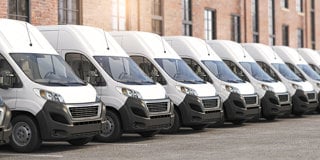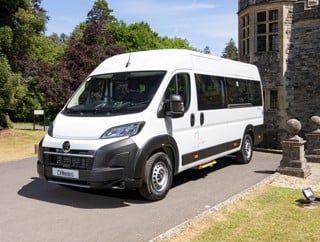Royal Mail is adding a further 2,100 electric vans to its fleet over the next year, with around half expected to be deployed by Christmas.
Part of the company’s plans to achieve net zero by 2040, the new electric vehicles (EVs) will replace existing diesel vans and start being rolled out across the UK from August.
Royal Mail already had the largest electric delivery fleet in the UK with around 5,000 fully electric vans. The new additions will increase the total by almost half in just one year to more than 7,000.
Most of the vans will be charged on-site at Royal Mail’s delivery offices via a 100% renewable electricity supply.

When all 2,100 new electric vans are in use, they are expected to reduce Royal Mail’s total emissions by around 6,000 tonnes of carbon dioxide equivalent per year.
Jenny Hall, director of corporate affairs at Royal Mail, said: “We are proud to take another big step towards our target to be net zero by 2040.
“Electric vehicles provide a wide range of benefits, reducing noise and air pollution in local communities as well as reducing our impact on the environment. We want as many customers as possible can benefit from zero-emission deliveries to their doorstep.”
The decision to grow its electric fleet substantially over the next 12 months comes after Royal Mail announced it was cutting the number of domestic flights it operates in half, with the company instead choosing to transport more mail by road.
It said that the switch from air to road will improve reliability as vehicles are less likely to be delayed by bad weather and are less capacity-constrained, enabling it to transport more during busy periods.
In an effort to cut CO2 emissions from its heavy goods vehicle (HGV) fleet, Royal Mail has also introduced hydrotreated vegetable oil (HVO), which is a renewable alternative to diesel.
The company’s ‘Steps to Zero’ environment strategy set a goal of achieving Net-Zero by 2040. The company has already reduced Scope 1 and 2 emissions by 18% in two years, with a target to achieve a 50% reduction by 2030.
























Login to comment
Comments
No comments have been made yet.